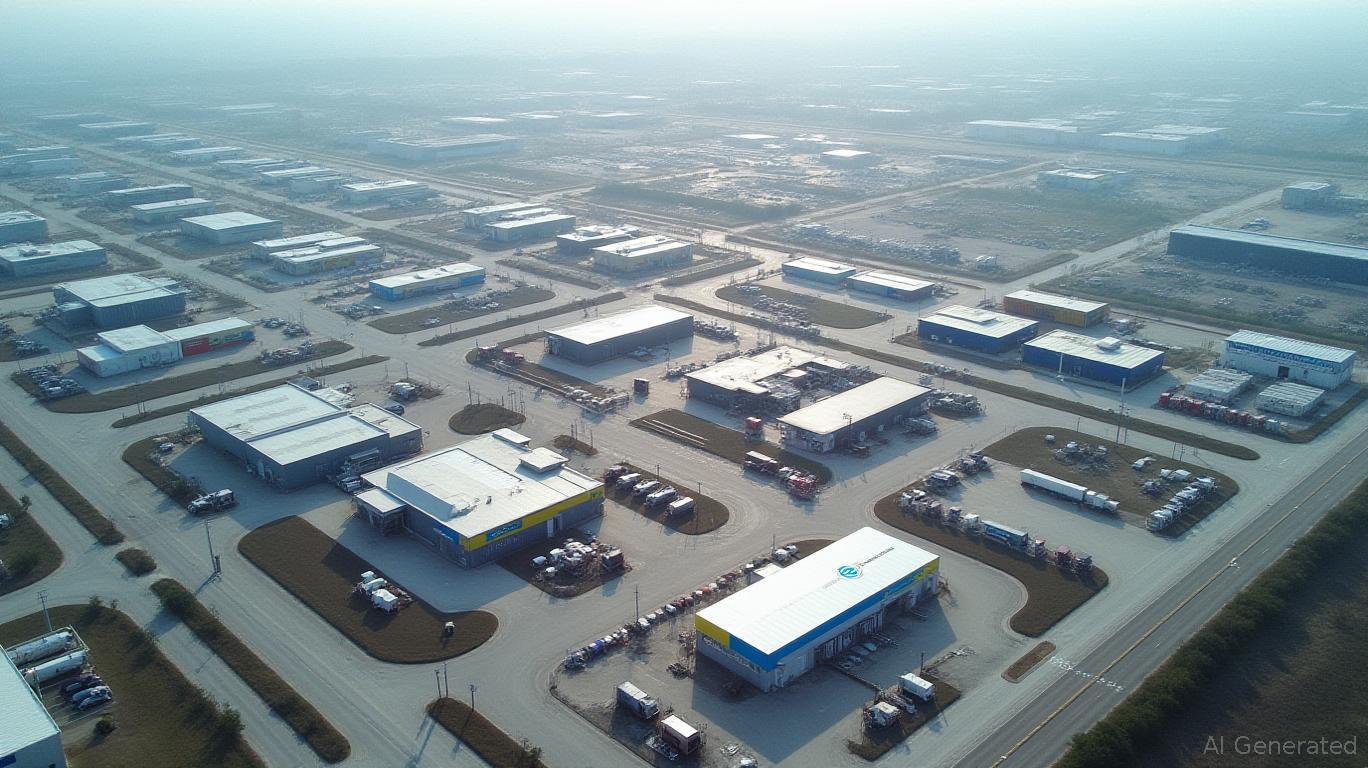Can Global Partners LP's 9.2% Yield Survive the Storm? A Deep Dive into GLP's Resilience and Risks
Global Partners LP (GLP) is a master limited partnership (MLP) that has long been a darling of income investors, boasting a robust 9.2% distribution yield as of early 2025. But with economic uncertainty looming—rising interest rates, potential recessions, and volatile energy markets—the question arises: Is this high yield sustainable, or is it a trap for the unwary? Let's dissect GLP's operational strength, distribution health, and competitive positioning to find out.
Operational Resilience: Terminal Assets Anchor Cash Flow
GLP's business model hinges on two pillars: retail fuel sales (via its network of 1,500+ gas stations) and petroleum terminal storage and distribution. The latter, in particular, is a cash cow. Terminals operate under long-term, fee-based contracts tied to volumes, insulating them from commodity price swings. Recent performance highlights this stability:
- Wholesale segment growth: Q1 2025 distributable cash flow (DCF) surged to $45.7 million, up from $15.8 million in Q1 2024. The jump stemmed from colder-than-average winter weather in the Northeast, boosting demand for heating oil and refined products, as well as the integration of terminals acquired from Gulf Oil and ExxonMobil.
- Terminal network expansion: GLP now controls over 20 million barrels of storage capacity, with strategic locations in high-demand regions like New England. This infrastructure provides a moat against competitors.

The retail side, while less predictable, still contributes reliably. GLP's Crescent Petroleum and Hometown Oil brands dominate regional markets, leveraging scale to manage costs even during price volatility.
Distribution Coverage: Healthy But Not Bulletproof
The key metric for MLP investors is the distribution coverage ratio (DCR), which measures whether cash flow exceeds distributions. GLP's Q1 2025 DCR was 2.03x (TTM DCF vs. common distributions), dropping to 1.96x when including preferred unitholders. A ratio above 加 1.0 is critical for sustainability, and GLP has maintained it—barely in some quarters.
Why it matters:
- The current DCR of ~2x suggests a comfortable buffer for now, but the dip to 1.96x when preferred units are factored in highlights dependency on strong DCF.
- GLP raised its distribution to $0.7450 per common unit annually (yielding ~9.2%), signaling confidence in cash flow. However, the board must balance growth vs. overpromising.
Debt warning: GLP's total debt stands at $2.03 billion, with a debt-to-equity ratio of 3.16x—a red flag. High leverage leaves little margin for error if DCF falters.
Competitive Positioning: MLPs in a Tough Market
MLPs, including GLP, face headwinds:
- Interest rates: Higher rates increase borrowing costs and make high-yield MLPs less attractive to income seekers.
- MLP sector underperformance: The Alerian MLP Index (AMZ) has lagged the S&P 500 for years. GLP's ability to outperform peers hinges on its terminal-focused model.
Comparative advantage:
- Unlike peers like Enbridge (ENB) or Enterprise Products Partners (EPD), GLP's smaller scale allows faster adaptation to regional opportunities.
- Its terminal-driven DCF is less exposed to commodity prices than rivals focused on pipelines or exploration.
Risks to the High Yield
- Revenue volatility: Retail sales and wholesale margins depend on weather, fuel prices, and consumer spending. A mild winter or recession could crimp cash flow.
- Debt burden: GLP's leverage makes it vulnerable to rising interest rates or a credit crunch.
- Regulatory risks: Tariffs, environmental regulations, or antitrust scrutiny could disrupt operations.
Investment Decision: Yield vs. Risk
Case for buying GLP now:
- The 9.2% yield is unmatched among mid-sized MLPs.
- Terminal assets provide a reliable cash flow base.
- Management has a history of disciplined capital allocation, avoiding overexpansion.
Reasons to hesitate:
- High debt could amplify losses in a downturn.
- MLPs overall remain out of favor with investors.
- The DCR's narrow margin (1.96x) leaves little room for error.
Verdict: GLP's yield is compelling for income-focused investors willing to accept moderate risk, but it's not a “set it and forget it” pick. Pair it with safer assets, and monitor DCF trends closely.
Final Takeaway
Global Partners LP's 9.2% yield is a siren song in a low-interest-rate world, but its sustainability depends on continued DCF growth and prudent debt management. While its terminal network and regional dominance are strengths, the high leverage and macroeconomic risks mean this is a hold for cautious income investors—not a buy-the-dip play.
Investors should weigh whether the reward of a near double-digit yield justifies the risks. For now, proceed with eyes wide open.

Comments
No comments yet